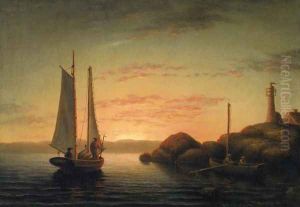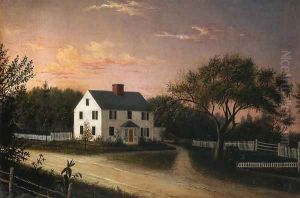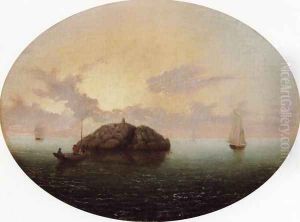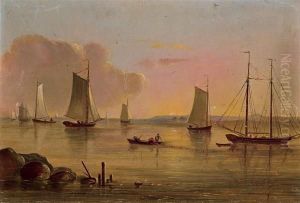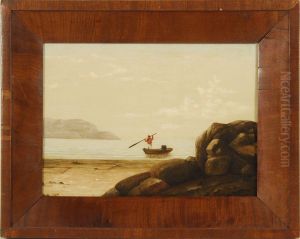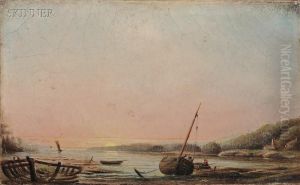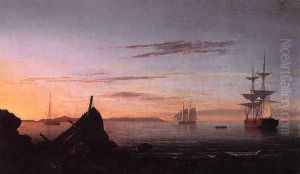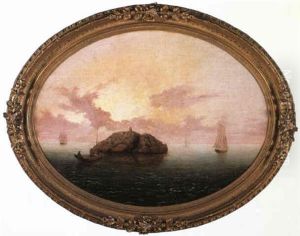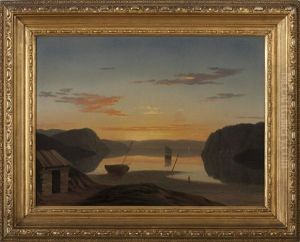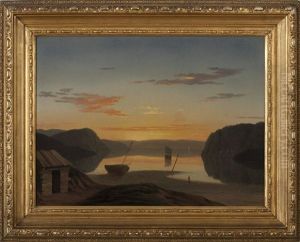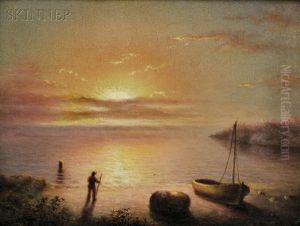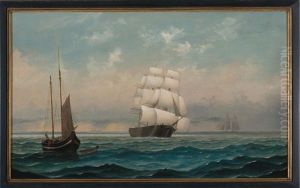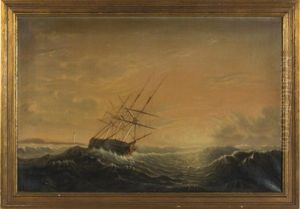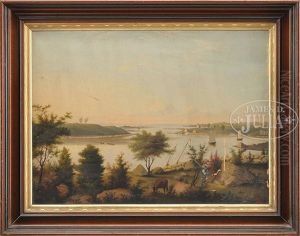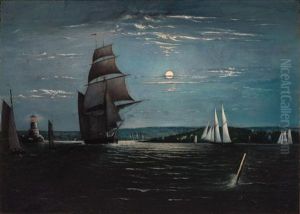Mary Blood Mellen Paintings
Mary Blood Mellen was an American painter, born in 1817 in Sterling, Massachusetts. She is best known for her association with Fitz Henry Lane, a prominent American luminist painter, under whom she studied and worked closely. Mellen's work is often difficult to distinguish from Lane's, as she not only created original works but also copied and interpreted Lane's paintings, sometimes making subtle variations in composition or color. This close collaboration has led to considerable interest in her contributions to American art, particularly in the context of the luminist movement, which is characterized by attention to detail, subtle light effects, and a calm, reflective mood.
Mellen's life and career embody the challenges and limited opportunities available to women artists in the 19th century. Despite her evident skills and the quality of her work, she remained relatively obscure for many years, overshadowed by her mentor and the male-dominated art world of her time. It wasn't until the late 20th and early 21st centuries that art historians began to reassess her contributions and recognize the significance of her work both in its own right and in its contribution to Lane's legacy.
Her paintings, often maritime scenes reflective of Lane's influence, also include landscapes, religious themes, and still lifes. Mellen's adept use of light and shadow, along with her meticulous attention to detail, make her works stand out. Her paintings are now held in several prestigious collections and have been the subject of renewed scholarly interest and several exhibitions focusing on her unique role in American art history.
Mary Blood Mellen died in 1886, but her work continues to gain recognition and appreciation for its quality and for the light it sheds on the role of women artists in the 19th century. Her legacy is a testament to her skill and perseverance in an era that was often unreceptive to the talents of women. Mellen's story and art contribute significantly to our understanding of American luminism and the broader landscape of American art history.

